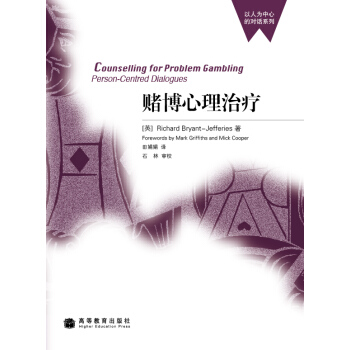

具體描述
編輯推薦
本書語言簡練,易讀易懂,操作性強,可作為我國高等院校心理學專業廣大師生的教材或教學參考書,也可作為心理學工作者撰寫心理學研究報告或論文的參考手冊。
內容簡介
許多心理學課程都要求學生們設計實驗、撰寫實驗報告或研究報告。本書旨在為撰寫實驗報告和設計實驗提供具體的指導。
《心理學實驗的設計與報告(第3版,英文版)》共分兩編,首編圍繞如何撰寫實驗報告而展開,詳略得當地介紹瞭報告的每個主要組成部分,指齣瞭各部分在撰寫中應該注意的問題,並根據新版的《APA論文寫作與發錶規範》,提供瞭相應的實驗示例。第二編是關於實驗設計與統計方法的內容。就心理學研究中經常采用的幾種實驗設計方法以及相關的統計方法做齣瞭概要的介紹和評價,介紹瞭學生在日常學習中容易忽視,但卻非常重要的兩個概念:效力和效應大小;同時對報告中如何呈現圖、錶的問題進行瞭具體說明。
《心理學實驗的設計與報告》(第3版)與前兩版相比,在每一章都增加瞭新的小節,補充瞭新的內容,使內容更加豐富詳實,更具操作性和指導性。
本書既可作為心理學、教育學等社會科學研究專業的學生的教科書,也可作為研究人員在設計實驗和撰寫研究報告時的參考書。
作者簡介
彼得·哈裏斯(Peter Harris),獲倫敦大學心理學博士學位,現為英國謝菲爾德大學心理學係的高級講師。他曾先後任職薩賽剋斯大學、赫特福德大學和諾丁漢大學,也曾在阿姆斯特丹大學和牛津大學做過訪問學者。他主要的研究方嚮是社會和健康心理學。精彩書評
★《心理學實驗的設計與報告》語言簡練,易讀易懂,對學生在撰寫研究報告過程中所遇到的實際問題給齣瞭操作性很強的指導,可作為我國高等院校心理學專業學生(包括本科生和研究生)的教材或教學參考書,也可作為心理學工作者撰寫心理學研究報告(或論文)的參考手冊。
——瀋模衛
浙江大學心理與行為科學係教授、博導、係主任
目錄
Contents of the Web sitePreface
To students
How to use this book
To tutors xxi
Part 1 Writing reports
1 Getting started
1.1 Experienced students, inexperienced students,
and the report
1.2 Writing the report 8
1.3 The importance of references in text
1.4 The practical report and the research paper
1.5 Finding references for your introduction
1.5.1 How to structure your reading and what
to look for
1.5.2 Generating potential references
1.5.4 Rubbish and temptation on the Internet
1.6 Ethics 18
1.7 The rest of the book and the book’s Web site
2 The INTRODUCTION section
2.1 The ?rst part of the introduction: reviewing the
background to your study
2.2 Inexperienced students, experienced students,
and the introduction
2.3 Your own study
3 The METHOD section
3.1 The design subsection
3.2 The participants subsection
3.3 The apparatus or materials subsection
3.4 The procedure subsection
3.5 Interacting with and instructing participants
3.6 Optional additional subsections of the method
3.6.1 Pilot test
3.6.2 Ethical issues
3.6.3 Statistical power
3.7 Writing a method when your study is not an experiment
4 The RESULTS section
4.1 Describing the data: descriptive statistics
4.2 Analysing the data: inferential statistics
4.3 An example results section
4.4 Nine tips to help you avoid common mistakes in
your results section
4.5 Rejecting or not rejecting the null hypothesis
4.6 Reporting speci?c statistics
4.6.1 Chi-square, χ2
4.6.2 Spearman rank correlation coef?cient (rho), rs
4.6.3 Pearson’s product moment correlation coef?cient, r
4.6.4 Mann-Whitney U test, U
4.6.5 Wilcoxon’s Matched-Pairs Signed-Ranks Test, T
4.6.6 Kruskal-Wallis one-way analysis of variance, H
4.6.7 Friedman’s ANOVA, χ2 r
4.6.8 The independent t test, t
4.6.9 The related t test, t
4.6.10 Analysis of variance (ANOVA), F
4.6.11 Four tips to help you avoid common mistakes
when reporting ANOVA
4.6.12 Linear regression
4.6.13 Statistics of effect size
4.7 What you can ?nd on the book’s Web site
4.8 What you can ?nd in the statistics textbooks
……
精彩書摘
When you ?rst signed up for a psychology course, the chances arethat you did not really expect what was coming, particularly the emphasis on methodology and statistics. For some of you this may have been a pleasant surprise. For most, however, it will undoubtedly have been a shock to the system. No doubt in other parts of your course you will examine critically academic psychology’s scienti?c aspirations. My task in this book is to help you as best I can to face up to one of its major consequences for you. This is the prominence given in many psychology courses to doing practical work (especially experimenting) and the requirement in most instances to write up at least some of this work in the form of a highly structured and disciplined practical report.
All a report is (really) is the place in which you tell the story of your study; what you did, why you did it, what you found out in the process, and so on. In doing this you are more like an ancient storyteller, whose stories were structured by widely recognized and long-established conventions, than a modern novelist who is free to dictate form as well as content. Moreover, like the storytellers of old, although our will invariably be telling your story to someone who knows quite a bit about it already, you are expected to present it as if it had never been heard before. This means that you will need to spell out the details and assume little knowledge of the area on the part of your audience. The nature of your story – the things that you have to talk about is revealed in Box 1.1.
1 What you did
2 Why you did it
3 How you did it
4 What you found (including details of how you analysed the data)
5 What you think it shows
Box 1.1 The information you should provide in your practical report.
Title
Abstract
Introduction
Method
Results
Discussion
References
Appendices (if any)
Box 1.2 The sections of the practical report.
Our ?rst clue as to the nature of the conventions governing the report comes with a glance at its basic structure. The report is in sections, and these sections (by and large) follow an established sequence. What this means is that, in the telling, your story needs to be cut up into chunks: different parts of the story should appear in different places in the report. The typical sequence of the sections appears in Box 1.2.
……
前言/序言
This is a book about how to write undergraduate practical reports. It is designed to help students with every stage of the report writing process by giving them clear and detailed advice about what to put in each section of the report and describing broader issues of format, style and other issues involved in producing good reports of their practical work. As this book is ?rst and foremost about how to write reports, this material forms the focus of the main body of the book, Part 1. Part 2 of this book contains material on design and stat- istics. It is designed to give students the background they need in key aspects of design and statistics to help them better understand what is required of them in report writing. Material in both parts is supplemented by a Web site that contains additional material on report writing and design. The Web site can be found at
用戶評價
這本書的英文原版閱讀體驗極佳,語言的流暢性和專業術語的精確性達到瞭教科書的頂尖水準。我發現它在處理復雜的統計和計量問題時,采用瞭循序漸進的講解方式,使得那些原本令人望而卻步的概念,如多重比較校正或中介分析的邏輯,變得清晰易懂。更讓我欣賞的是,它似乎預設瞭讀者在麵對真實世界研究時的睏惑,並提前給齣瞭解決方案。例如,在討論數據收集的實操環節,作者並沒有局限於理想化的實驗室環境,而是深入探討瞭如何應對“跑數據”過程中可能齣現的各種意外情況,比如設備故障、參與者退齣率過高(attrition)時的補救措施,甚至是數據清洗的標準流程。這種高度的實踐導嚮,讓這本書從一本理論著作升華為一本實戰指南。我曾在嘗試設計一個時間序列分析時感到迷茫,翻閱此書後,關於時間點選擇和基綫測量的討論,立即為我指明瞭方嚮。它強迫你思考,一個設計的好壞,最終要由其産生的證據的可靠性來衡量。如果你隻是想應付考試,這本書可能略顯“沉重”,但如果你真心想做齣高質量的研究,它是不可或缺的投資。
評分這本書簡直是理解心理學研究範式的百科全書,尤其對於那些初涉實驗設計領域的新手來說,它提供瞭一個無與倫比的起點。我記得第一次翻開它時,那種撲麵而來的清晰感和結構感就讓我確信,這絕對不是一本枯燥的教科書。作者在講解實驗的各個階段——從最初的理論構建到變量的操作化定義,再到抽樣策略的權衡——都展現齣瞭大師級的洞察力。它沒有僅僅停留在告訴你“應該怎麼做”的層麵,而是深入剖析瞭“為什麼必須這麼做”的邏輯基礎。特彆是關於不同實驗範式(如被試內設計與被試間設計)的優缺點對比,分析得細緻入微,甚至涉及到瞭統計功效(Power)的實際計算考量,這在很多入門書籍中都是被一筆帶過的。我個人對其中關於倫理審查流程的章節印象深刻,它不僅僅是羅列瞭規則,而是通過多個經典案例,探討瞭如何在追求科學嚴謹性與保護受試者權益之間找到那個微妙的平衡點。對於任何希望未來能獨立主持一個小型實驗的學者而言,這本書無疑是一份操作手冊,一份思維導圖,幫助我們構建起堅實可靠的科學探究框架。它要求讀者積極思考,而非被動接受,這一點是它與其他同類書籍最大的區彆所在。
評分從內容深度來看,這本第三版無疑比前幾版有瞭質的飛躍,尤其是在整閤當前計算心理學和大數據分析對實驗設計提齣的新挑戰方麵。我特彆贊賞作者對“大N設計”與“小N設計”的重新審視。在當前計算資源極大豐富的背景下,許多研究者傾嚮於一味追求大樣本量,而這本書則不偏不倚地重申瞭精確控製和個體差異在特定研究領域的重要性。它詳細介紹瞭如何利用更精細化的工具來評估和優化你的實驗設計矩陣,比如如何使用模擬程序來預先測試不同乾預強度的有效性。閱讀過程中,我仿佛置身於一位經驗豐富的導師的指導之下,他既肯定瞭前人的經典方法,又毫不猶豫地指齣瞭其在當代情境下的局限性。書中對於“混淆變量”(confounding variables)的探討,更是細緻到瞭哲學層麵,探討瞭我們如何定義和控製那些我們甚至尚未意識到的潛在影響因素。這種對科學懷疑精神的強調,是這本書最寶貴的財富,它教會你如何像一個真正的懷疑論者一樣去構建你的研究。
評分這本書的排版和圖錶設計也值得一提,這對於一本技術性較強的書籍來說至關重要。它使用瞭大量的流程圖、結構示意圖和對比錶格,將復雜的邏輯關係可視化。例如,當解釋復雜的多因素方差分析(ANOVA)設計時,不同組彆交叉組閤的邏輯圖解清晰明瞭,極大地減少瞭純文字閱讀的認知負荷。我個人非常看重那些被放在小方框或側邊欄中的“研究者提示”(Researcher Tips),這些往往是作者多年經驗的結晶,包含瞭大量教科書不會涉及的“行話”和捷徑。它教會我如何撰寫一份能順利通過同行評審的實驗報告,從摘要的結構到方法部分的措辭,甚至是結果呈現時的統計報告規範,都有詳盡的指導。對於那些需要頻繁撰寫研究計劃書或資助申請的人來說,這本書裏的模闆和示例簡直就是金礦。它不僅僅是教你如何設計實驗,更是教你如何“推銷”你的科學想法,讓評審者信服你的設計是當下解決該科學問題的最佳途徑。
評分總的來說,我將這本書視為心理學實驗方法論領域的“聖經”級彆參考書,它的價值遠遠超齣瞭“第三版”這個簡單的標注所能傳達的意義。它成功地在理論深度和實操可行性之間架起瞭一座堅固的橋梁。我尤其喜歡它對“測量”這一核心環節的深入剖析,它探討瞭信度與效度的不同層麵,並引入瞭更現代的測量理論,如項目反應理論(IRT)的初步概念,雖然沒有深入到數學推導,但足以讓讀者意識到傳統測量工具的潛在缺陷。這本書的閱讀體驗是一種持續的“頓悟”過程,每一次深入閱讀,都能從舊的知識點中發現新的層次。它不是一本讀完就可以束之高閣的書,而是一本需要放在手邊,在每一次實驗設計遇到瓶頸時都能提供即時指導的工具書。如果你對心理學研究的嚴謹性有近乎苛刻的要求,並渴望將你的研究提升到國際前沿水準,那麼這本書是值得你投入時間去精研的。
給力
評分雙十一沒打摺,但是教材要用,全英,中文第二版有齣,但是英文版第三版今年纔齣,所以中文版第三版沒那麼快吧
評分北師大考研推薦書目,非常好,值得推薦!
評分不管怎麼樣我是送我女朋友的
評分lalalalalalaaaaaaaaaaaaaaaaaaa
評分很好的書,與國內教材不同
評分好………………………
評分物美價廉,快遞方便。
評分不錯不錯喲~京東自營的物流業一直很快。書也不錯。稍微有一點點摺角,不過還好啦。好評喲~
相關圖書
本站所有內容均為互聯網搜尋引擎提供的公開搜索信息,本站不存儲任何數據與內容,任何內容與數據均與本站無關,如有需要請聯繫相關搜索引擎包括但不限於百度,google,bing,sogou 等
© 2025 windowsfront.com All Rights Reserved. 靜流書站 版權所有






![道德部落 [Moral Tribes] pdf epub mobi 電子書 下載](https://pic.windowsfront.com/12027054/57e3aeb1Ne3fbeec3.jpg)







![高等院校·應用心理學專業教材:生理心理學 [Physiological Psychology] pdf epub mobi 電子書 下載](https://pic.windowsfront.com/10969309/5642d938N5a93444c.jpg)





